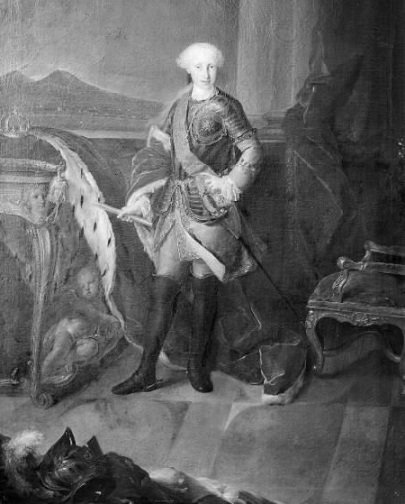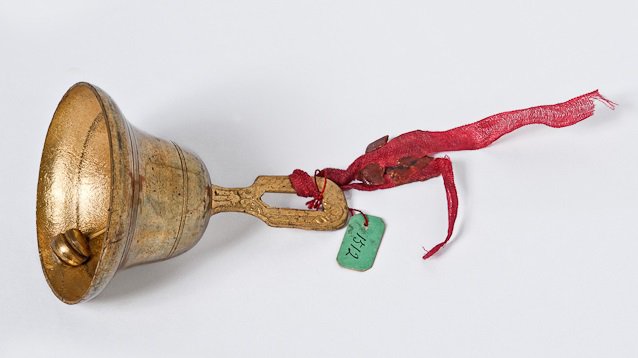The images on this page - based on references in Leopold and Wolfgang's letters - are illustrative of the sorts of souvenirs the Mozarts might have purchased or been given on their travels. In this respect they differ from the images on the previous pages, which represent the actual surviving souvenirs purchased by or given to the Mozarts.
Copper engravings from Paris: Leopold Mozart to his landlord Johann Lorenz Hagenauer, 28 June 1764:
- . . . in due course I shall — God willing — show you some copper engravings not only of these places but of many other things both in Paris and London. You can then have a fuller explanation of them. I’ve left a number of copper engravings in Paris that are worth 2 louis d’or.

‘Autre Vue Particulière de Paris depuis Nôtre Dame, Jusques au Pont de la Tournelle’, undated eighteenth-century engraving
Ague powder, relics and a belt from Viterbo: Leopold Mozart to his wife, Anna Maria Mozart, 14 April 1770:
- Fortunately we got a decent supper and slept well in Viterbo. While there we saw St Rosa of Viterbo who |: like St Catherine of Bologna in Bologna:| can be seen in a perfectly preserved state. From the former we took away an ague powder and some relics as a souvenir, from the latter a belt.[1]

Relic (belt) of St Caesarius (470-542), Bishop of Arles (http://fsspx.news/en/news-events/news/relics-st-caesarius-be-display-during-special-vatican-exhibition)
Copper engravings from Rome: Leopold Mozart to his wife, Anna Maria Mozart, 26 May 1770:
- I hope to bring back with me some copper engravings of the sights and curiosities of Naples, similar to those I already have of Rome.

Veduta di Piazza di Spagna from Giovanni Battista Piranesi, Vedute di Roma (1746-1748)
Lava from Vesuvius: Leopld Mozart to his wife, Anna Maria Mozart, 8 June 1770:
- I . . . have also received from Herr Meuricoffre a fine collection of Vesuvius lava - not the kind of lava that anyone can easily get hold of, but choice pieces with a description of the minerals that they contain and that are rare and hard to come by.

Pietro Fabris, Specimens of curious stones found by the Author on Mount Vesuvius from William Hamllton, Campi Phlegraei. Observations on the Volcanos of the two Sicilies as They have been communicated to the Royal Society of London (Naples, 1776-1779)
Portrait of King Ferdinand IV of Naples: Leopold Mozart to his wife, Anna Maria Mozart, 30 June 1770:
- In due course I`ll tell you a whole series of amusing things about this court [the court of Ferdinand IV at Naples]. You`ll also see the king’s portrait.

Francesco Liano, King Ferdinand IV of Naples, engraving c1766 (Copenhagen, Statens Museum for Kunst)
Religious relics, a piece of the Holy Cross, bells, candles and bonnets from Rome and Loreto: Leopold Mozart to his wife, Anna Maria Mozart, 21 July 1770, with a postscript by Mozart to his mother and sister, Maria Anna Mozart: ('Nannerl'):
- It turned out, then, to be the 16th when we performed our devotions in Loretto. I bought 6 little bells and various other things. NB. In addition to the other relics, I'm also bringing a piece of the Holy Cross back with me from Rome. [Wolfgang Amadeus Mozart:] I can't offer you anything at present, except for a number of small bells from Loreto and some candles, bonnets and fleas, which I`ll give you when I get home.

Loreto Bell, eighteenth- or nineteenth-century
Loreto bells were first produced in the mid-1750s as souvenirs of the large bell tower constructed by Luigi Vanvitelli there between 1750 and 1754.[1] Ague, from the old French ague meaning an acute fever and the Latin acuta meaning a sharp fever, is a medical condition akin to malaria, characterized by chills, sweating and paroxysms. It was sometimes treated with ague powder, made from alteris farinosa, also known as unicorn root, crow corn, white colic-root or white stargrass.